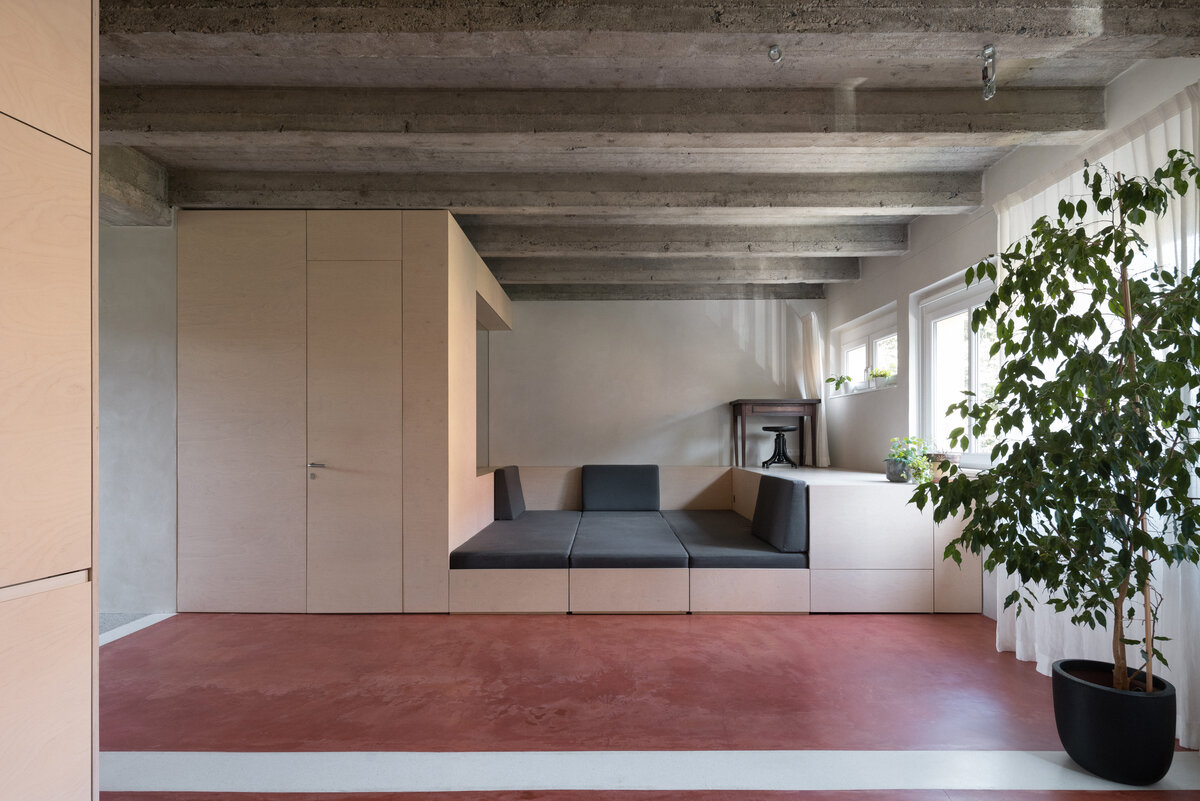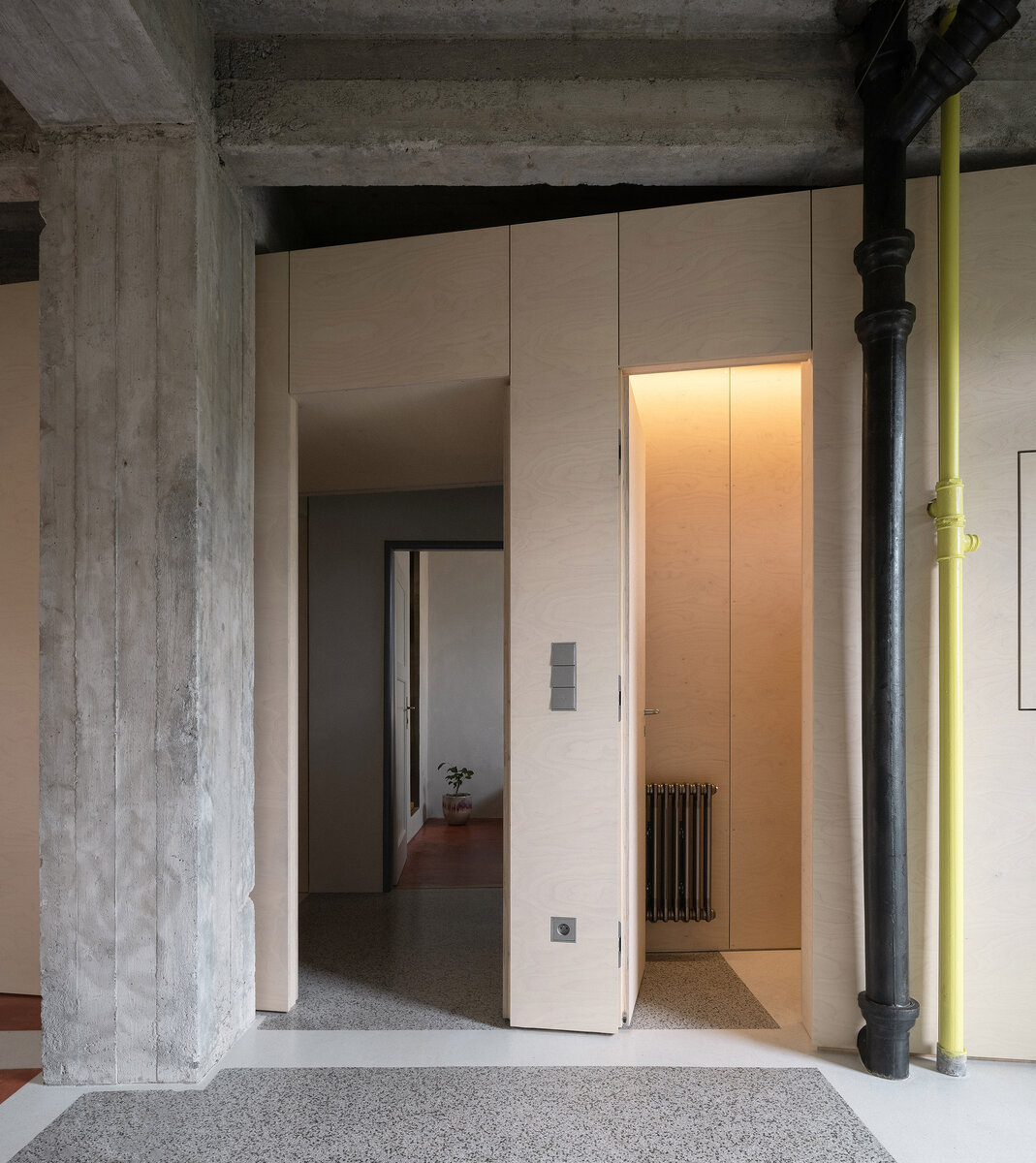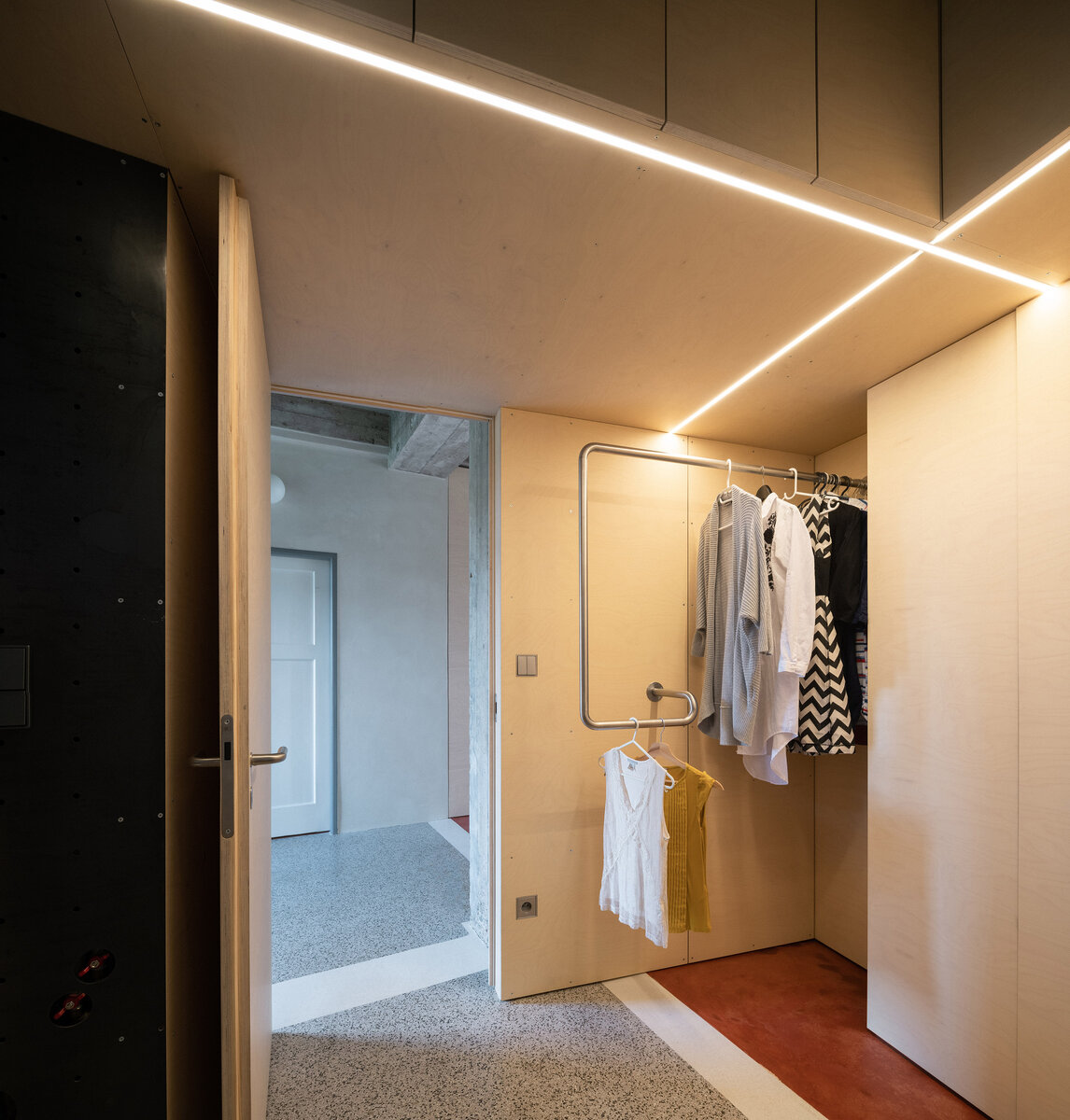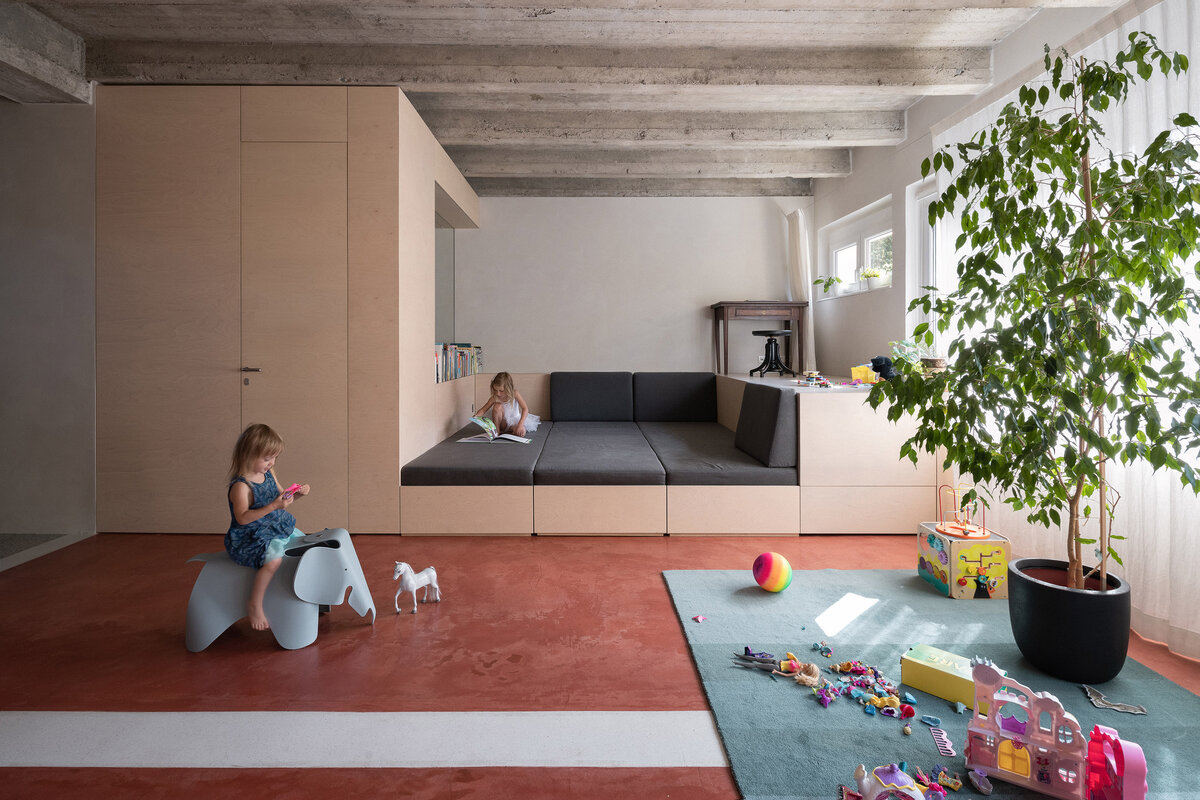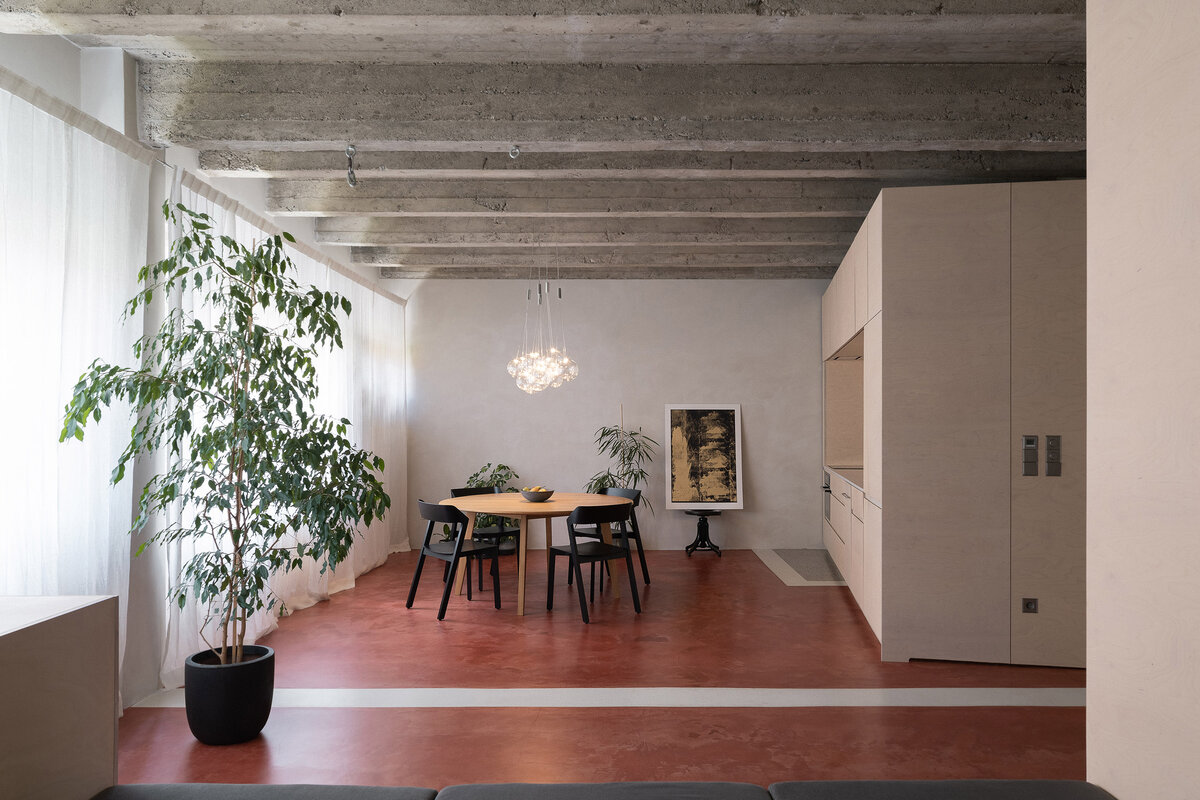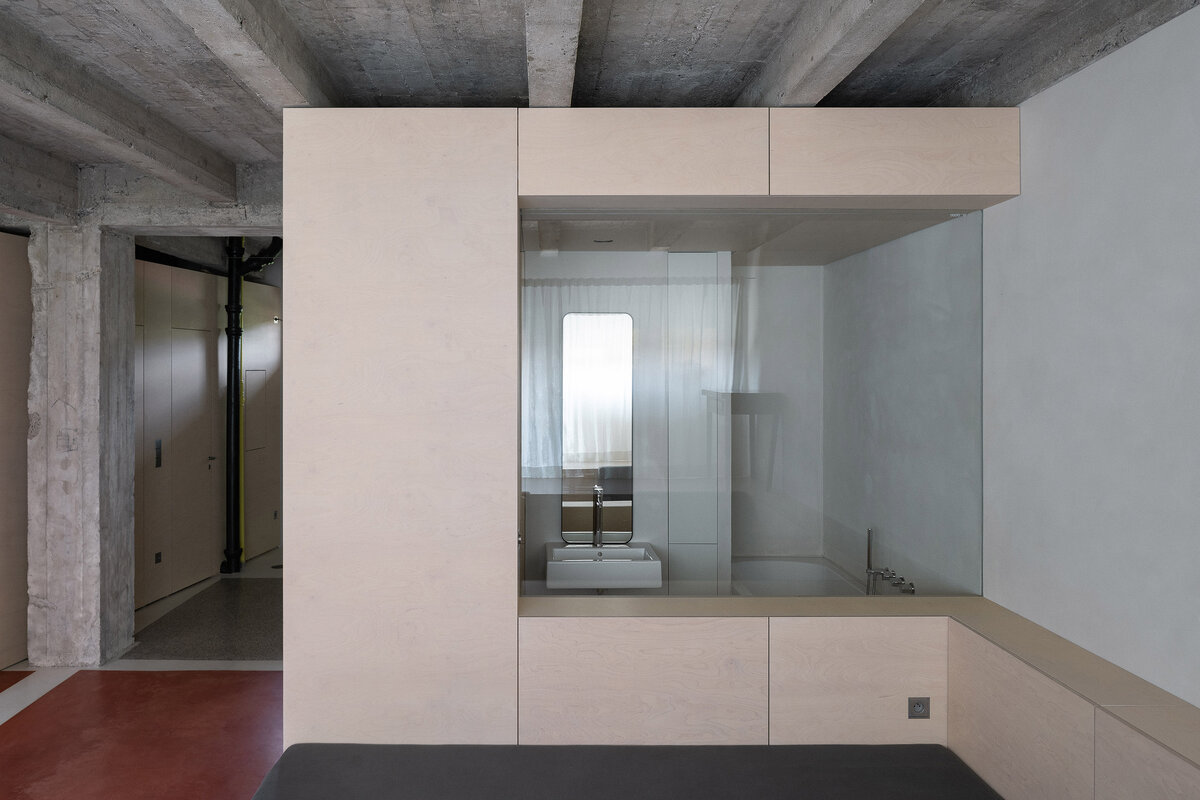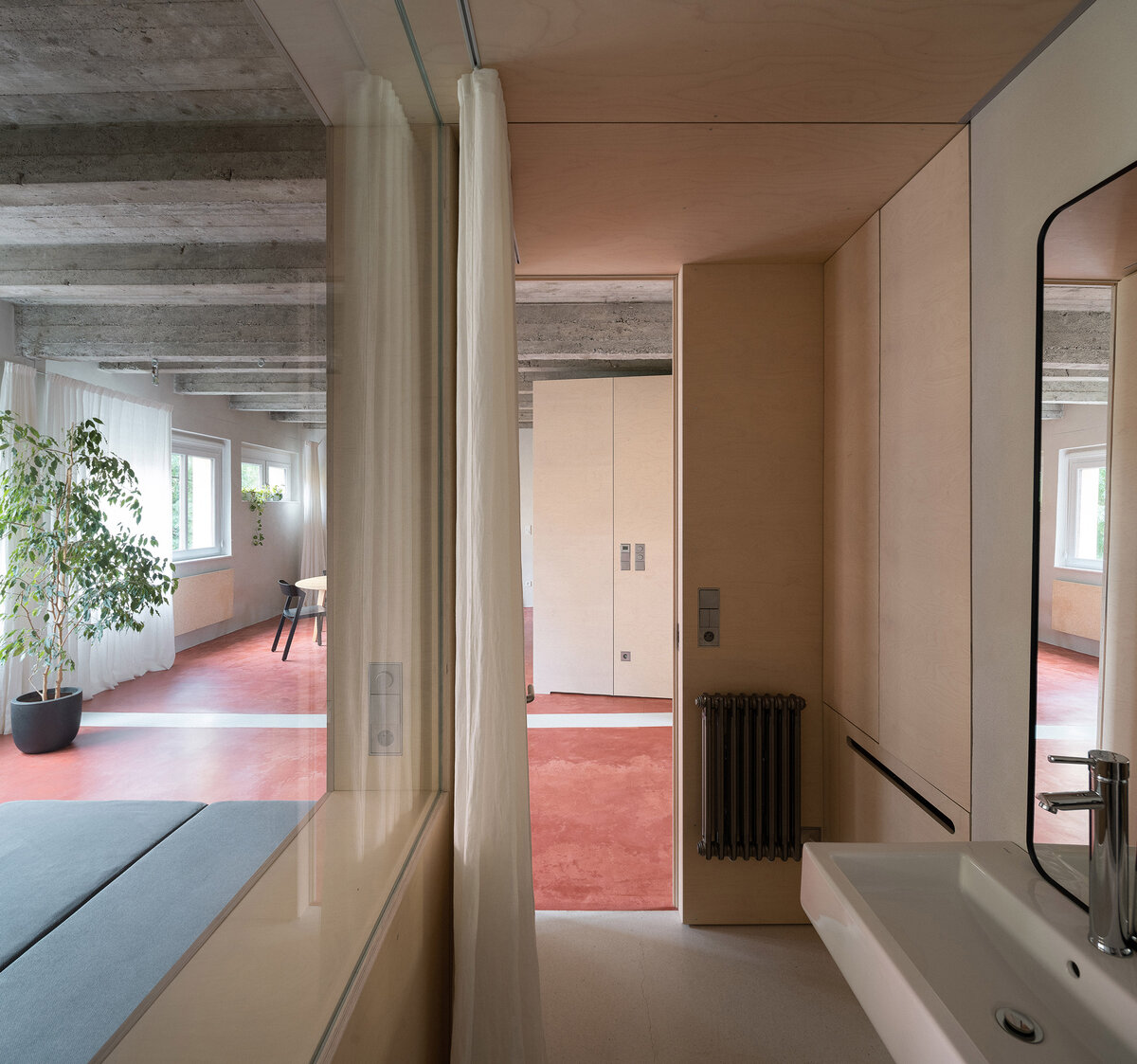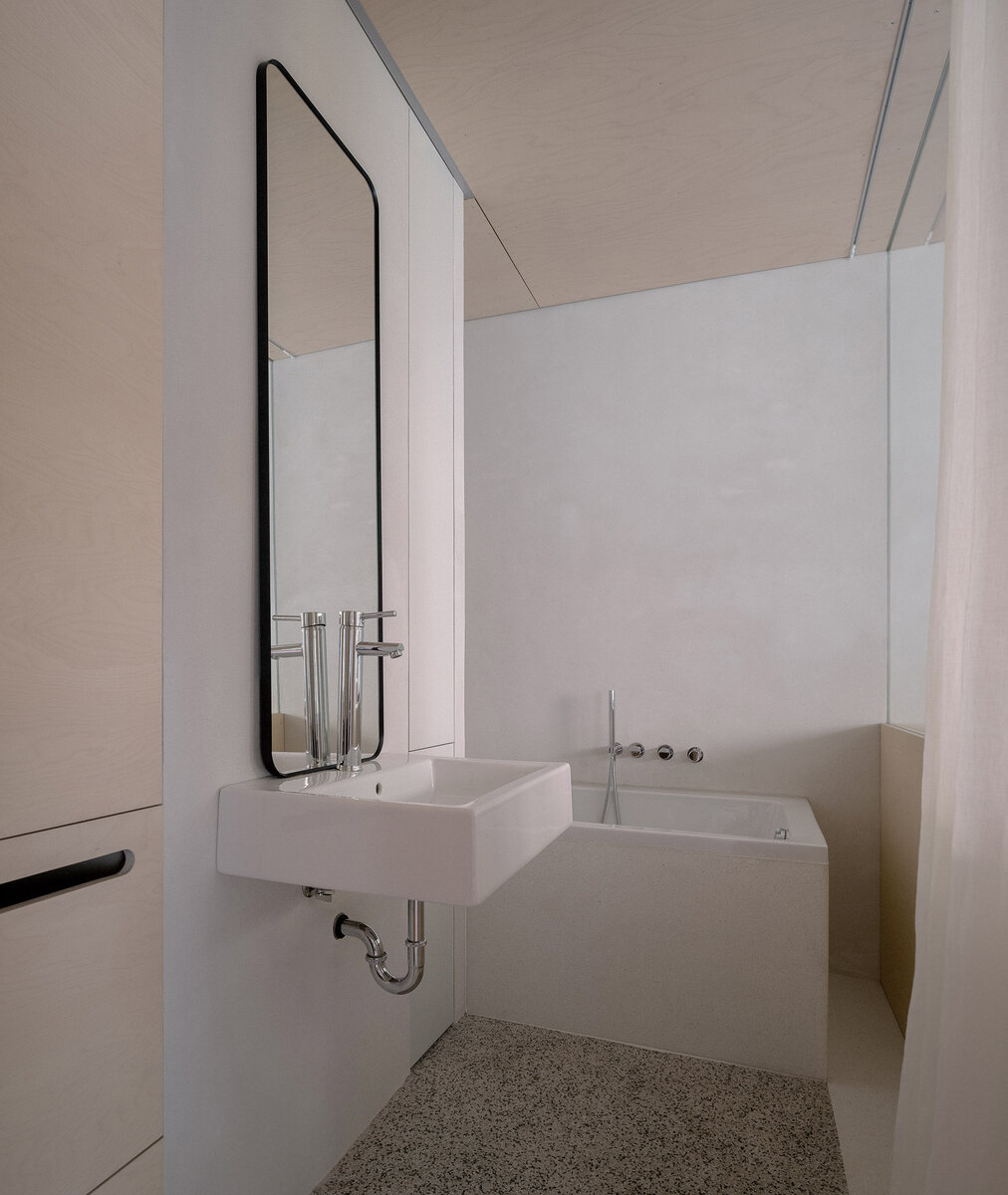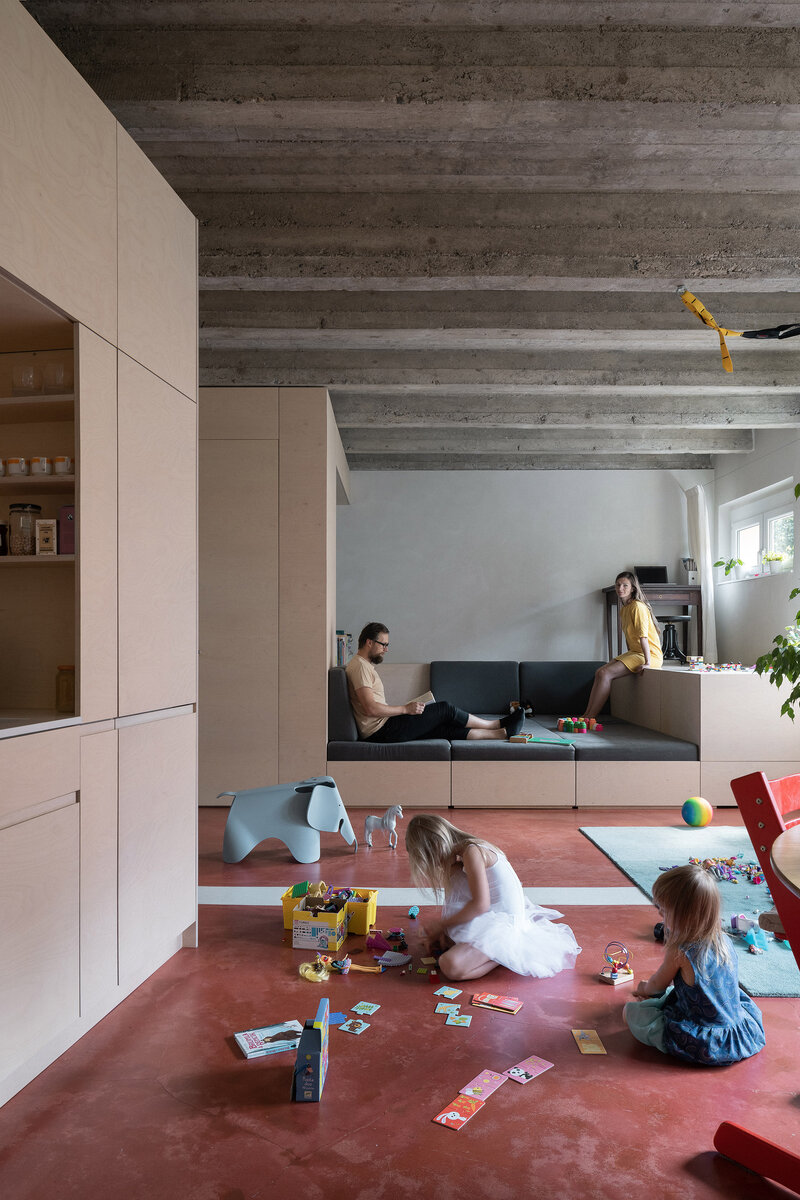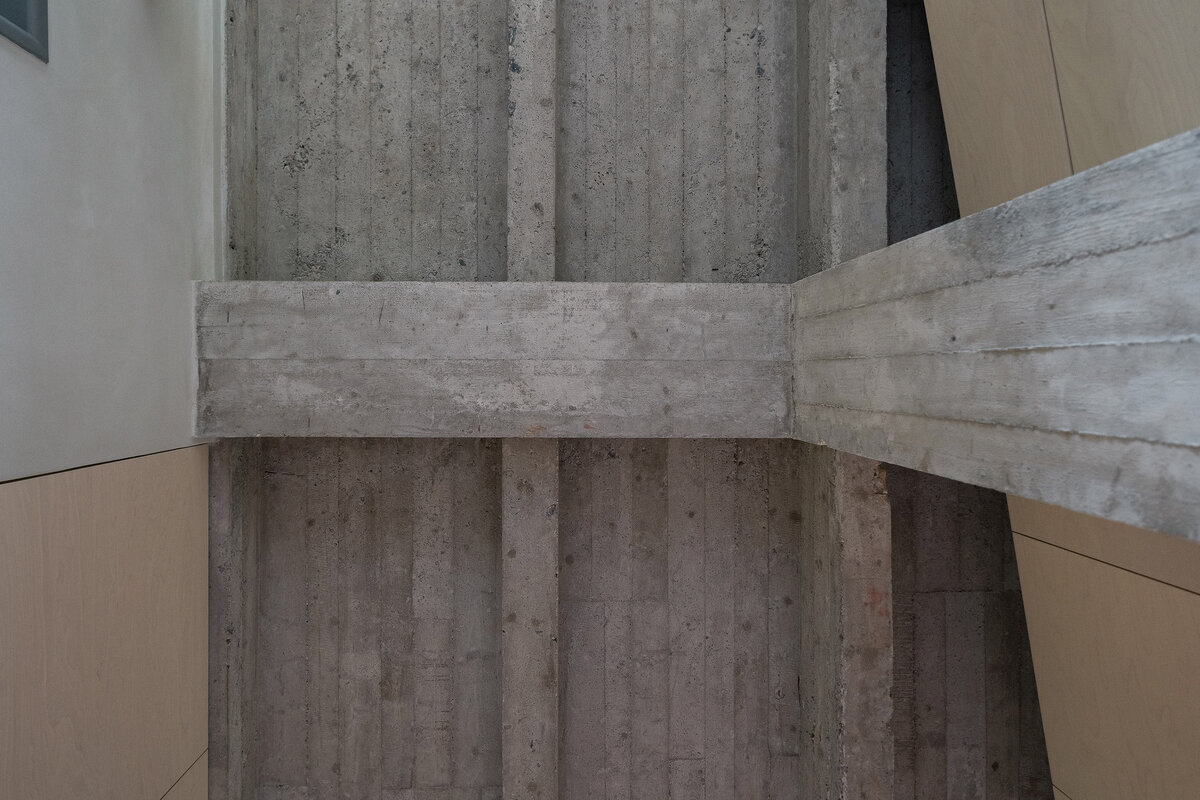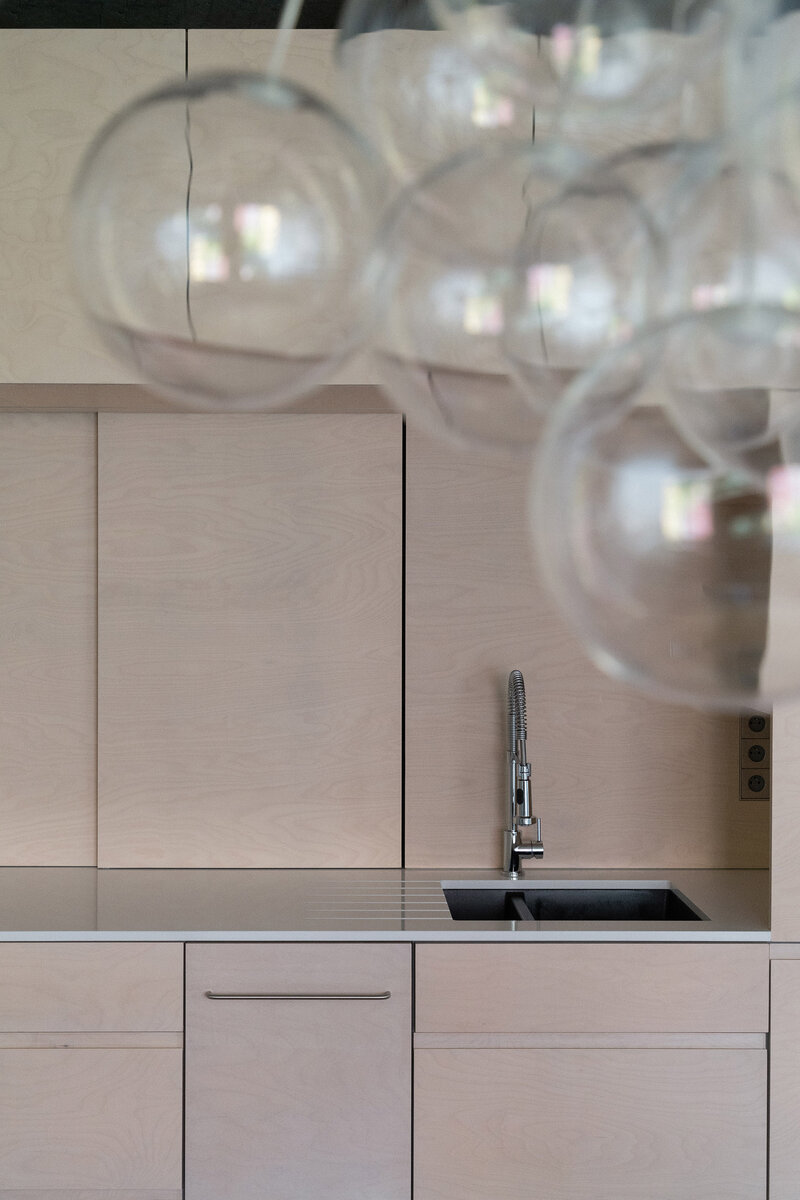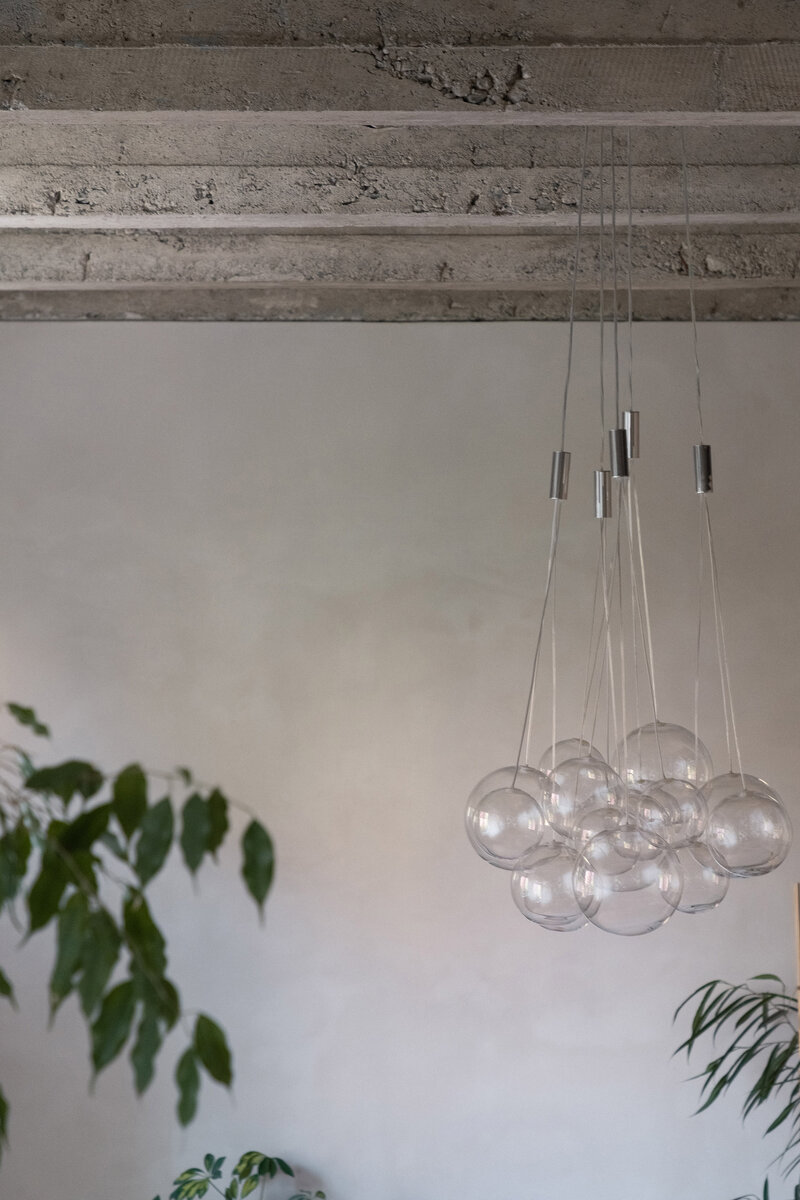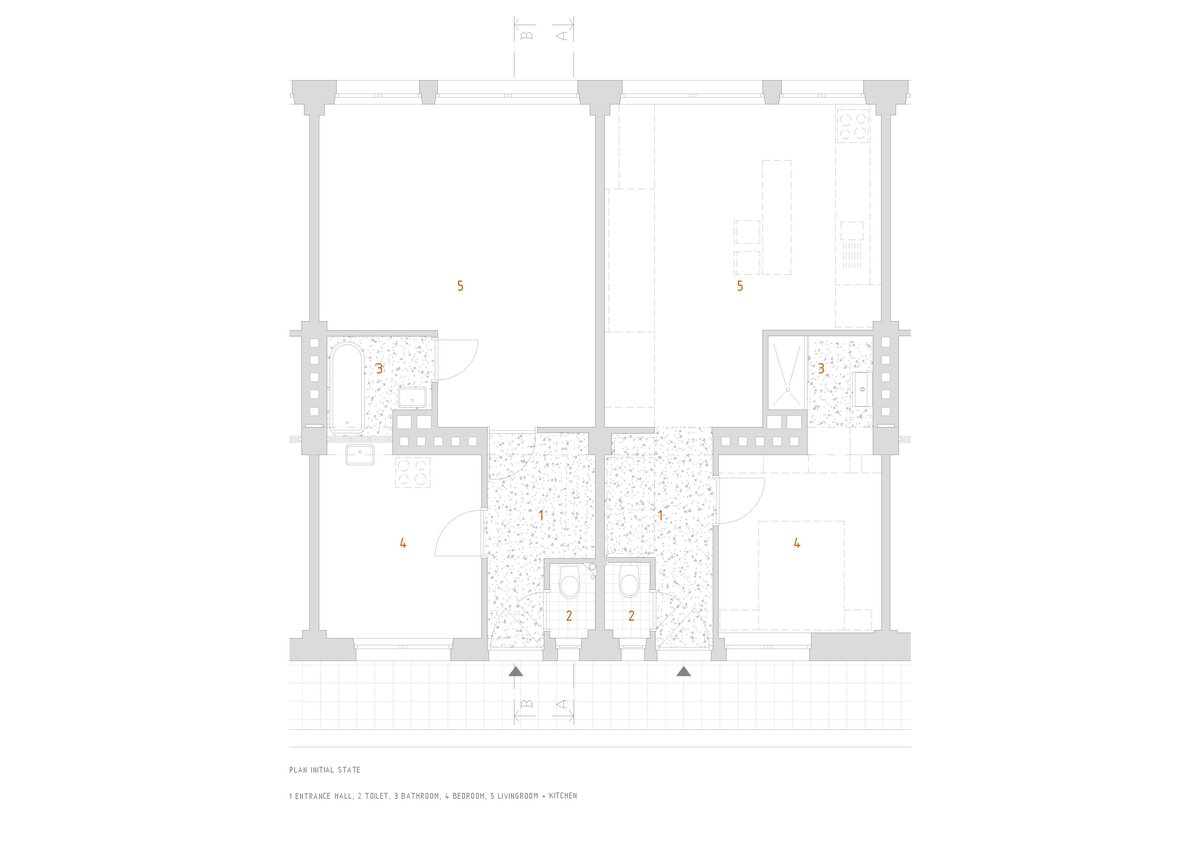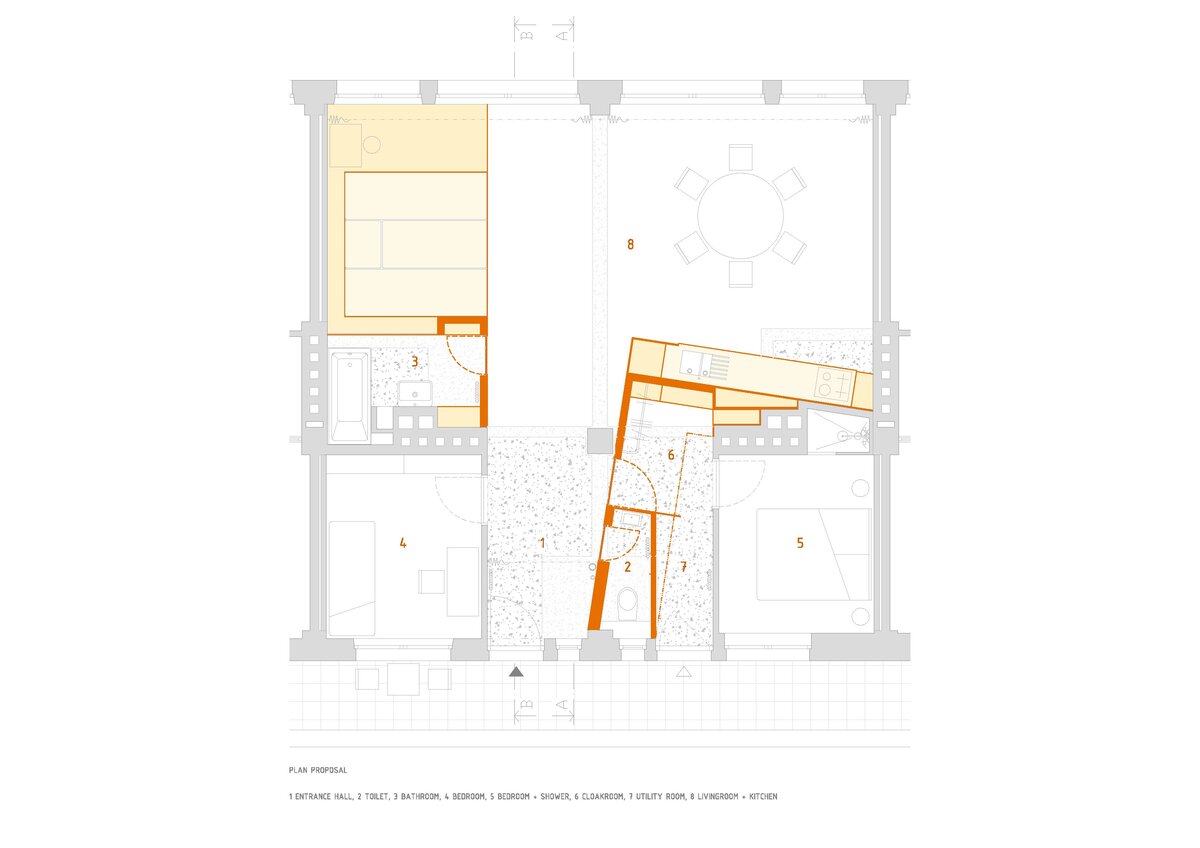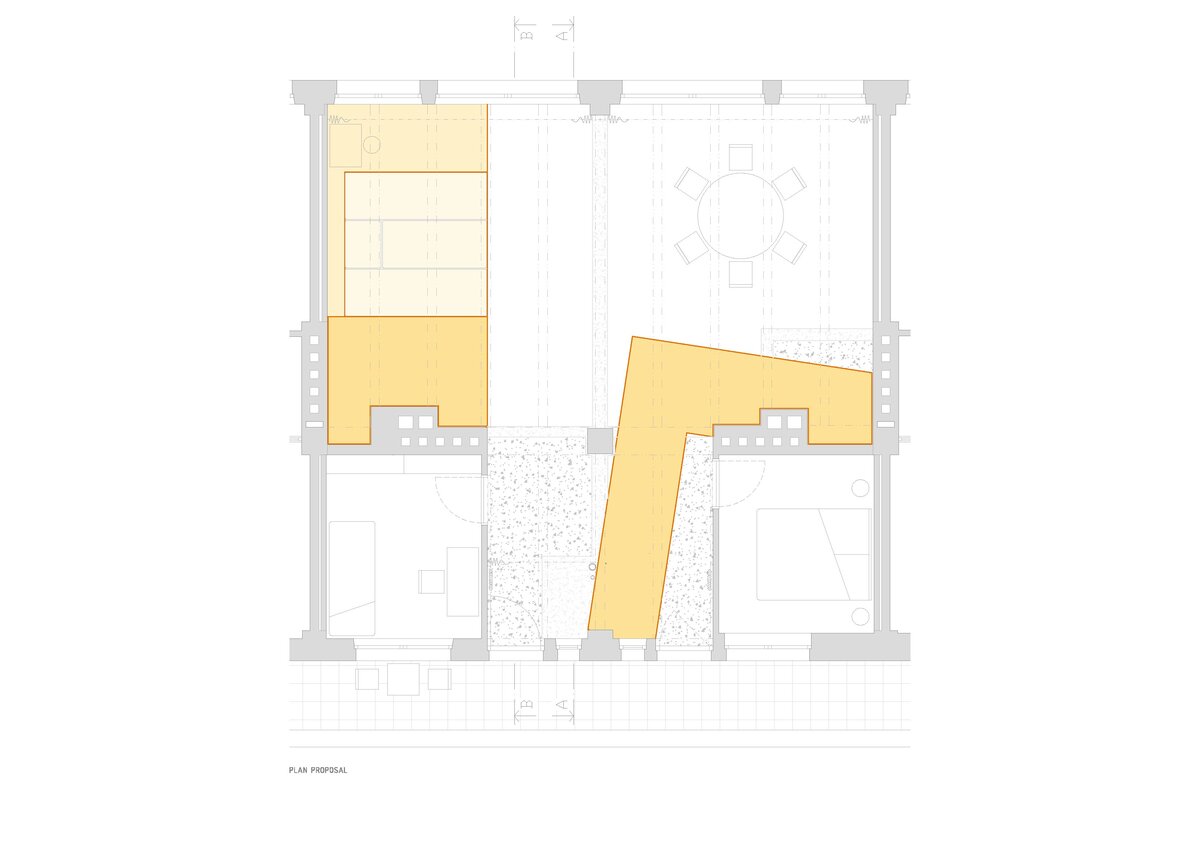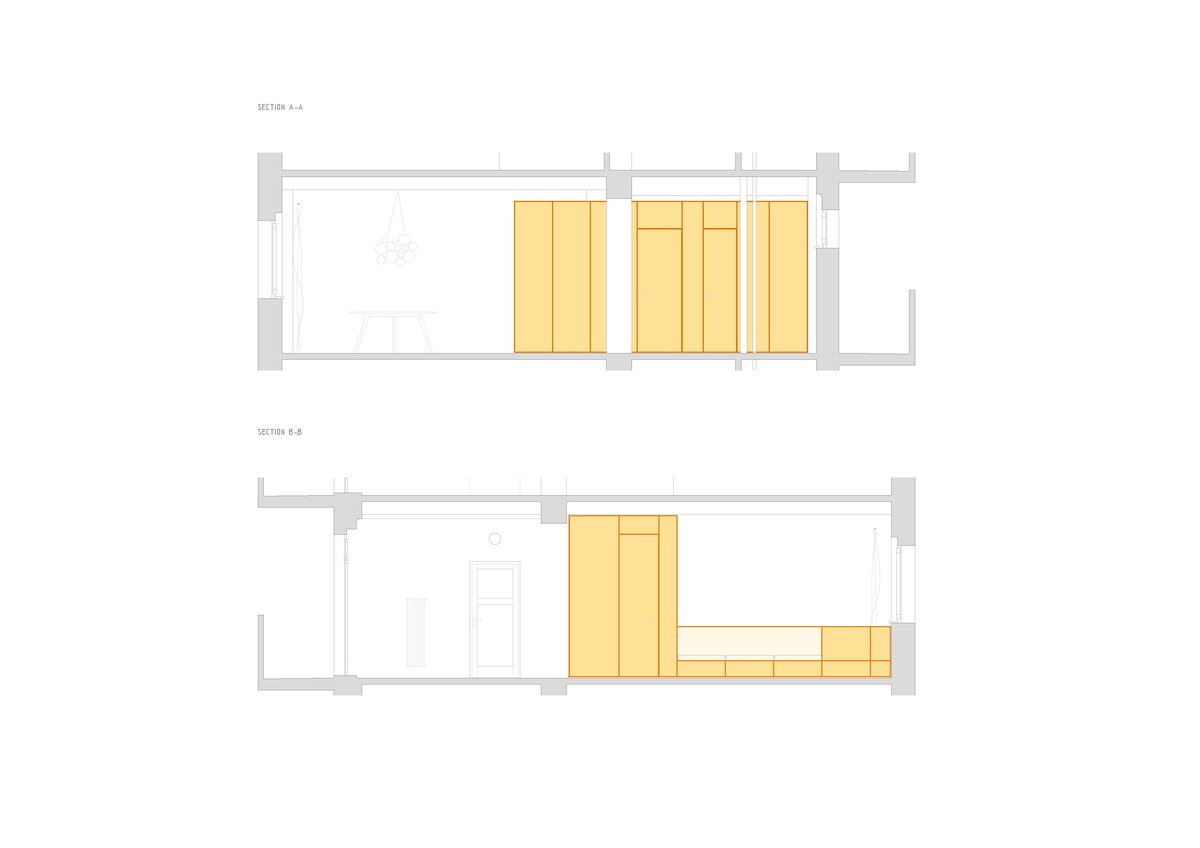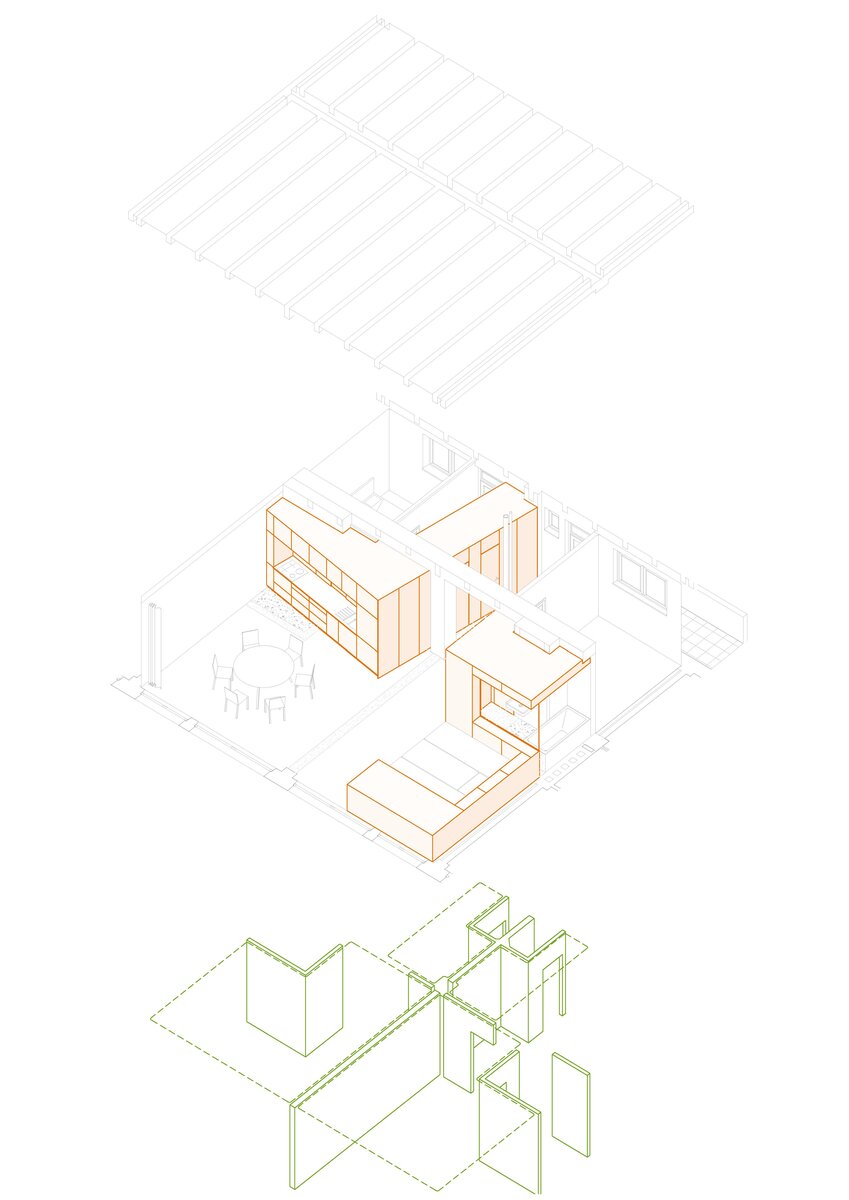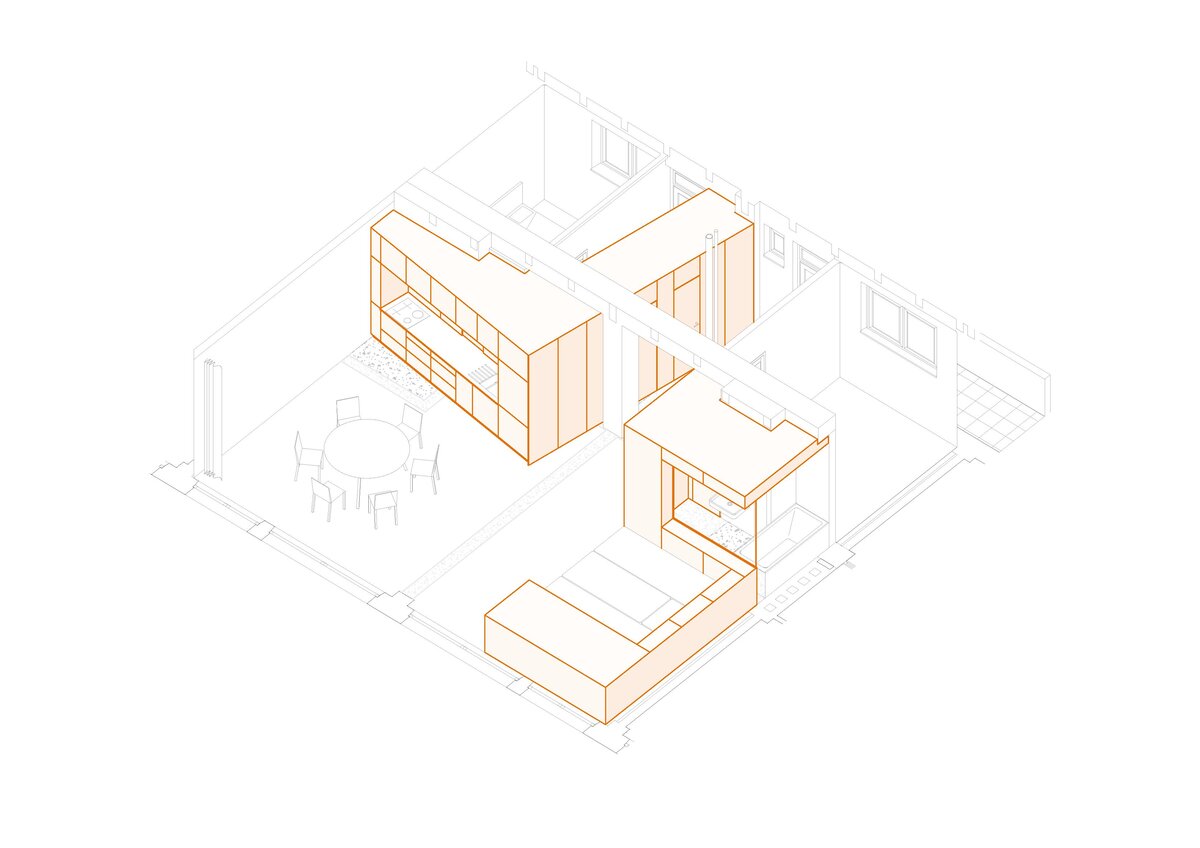| Author |
Vojtěch Kaas, Jan Kalivoda |
| Studio |
PROGRES architekti, Kamenická 4, 170 00 Praha 7 |
| Location |
U školičky 4, 190 00 Praha 9 |
| Investor |
Vojtěch Kaas |
| Supplier |
kaas interier
U školičky 4, 190 00 Praha 9
Krodus s.r.o.
Podholí 238, 165 00 Praha-Lysolaje |
| Date of completion / approval of the project |
January 2022 |
| Fotograf |
Alexandra Timpau, Národní 417/35, 110 00, Praha 1 - Staré Město |
We kicked-off the Apartment + Apartment Project when our family managed to buy a unit adjacent to our own and we started thinking about merging the two. While our Studio worked on various client projects, our own living space and increasing needs were constantly on my mind. I enjoy experimenting on myself as part of my creative process. I enjoy the sense of airiness, light, sharing, little nooks and crannies contrasting with open vistas, a diversity of materials, lots of greenery… The space we ended up creating is amenable to continuous transformation, allowing us to adapt the premises to our current needs for as long as we continue to use it.
We live in Libeň, in a functionalist apartment building composed of small tenement units. Conceived by Josef Chochol, Richard Ferdinand Podzemný and František Míšek, the design won an architecture competition in 1936. Originally, the building was devised as a modern, simple, austere and airy structure, economical but still light-filled. Over time, some of its original qualities were lost, but its essence remains.
The structural system is designed as a two-span reinforced concrete frame with ribbed ceilings and courtyard balconies. The simplicity of the structural system proved crucial for our modifications of the two units. Apart from having to account for load-bearing columns and chimney flues, we were free to adjust the interior layout as we saw fit. In the historical context in which the building was originally designed, the structural solution presented itself as a huge leap forward. It opened the way to a building system that is easy to remodel, transform and change. A shell system, a skeleton covered with skin.
To start with, we exposed the original structures and removed the brick lining, creating a free variable space with well-preserved xylolite floors, coved ceilings and original doors with brass fittings. We created a space devoid of all layers and uncovered a high-quality core; a space of unrestricted possibilities and no obstacles. We only kept two corner rooms, whose small size and location suited our needs.
We divided the new apartment into independent functional spaces. In order to keep them to a minimum, we situated them into two separate wooded boxes. The first one was inserted loosely under the main girder and contains a kitchen, storage space and a toilet while its position creates an intermediate space with a cloakroom and a utility room. The second box contains a bathroom with a view, a resting space and a workspace. The core of the interior therefore remains an open space.
The choice of materials used to structure the interior was clear to me from the very onset. I am emotionally connected to wood and can rely on a family-owned joinery shop. Most of the wooden parts in our new apartment passed through my hands, testing my patience and perseverance. The use of wood allowed us to blur the distinction between walls and furniture – the structures we used are both one and the other and put each of the two qualities to their best use.
I wanted the old touch of the original apartment to remain a part of my new design. We therefore left it imprinted in the floor. The white terrazzo strip in place of the original structures reminds us how the apartment used to function.
Green building
Environmental certification
| Type and level of certificate |
-
|
Water management
| Is rainwater used for irrigation? |
|
| Is rainwater used for other purposes, e.g. toilet flushing ? |
|
| Does the building have a green roof / facade ? |
|
| Is reclaimed waste water used, e.g. from showers and sinks ? |
|
The quality of the indoor environment
| Is clean air supply automated ? |
|
| Is comfortable temperature during summer and winter automated? |
|
| Is natural lighting guaranteed in all living areas? |
|
| Is artificial lighting automated? |
|
| Is acoustic comfort, specifically reverberation time, guaranteed? |
|
| Does the layout solution include zoning and ergonomics elements? |
|
Principles of circular economics
| Does the project use recycled materials? |
|
| Does the project use recyclable materials? |
|
| Are materials with a documented Environmental Product Declaration (EPD) promoted in the project? |
|
| Are other sustainability certifications used for materials and elements? |
|
Energy efficiency
| Energy performance class of the building according to the Energy Performance Certificate of the building |
|
| Is efficient energy management (measurement and regular analysis of consumption data) considered? |
|
| Are renewable sources of energy used, e.g. solar system, photovoltaics? |
|
Interconnection with surroundings
| Does the project enable the easy use of public transport? |
|
| Does the project support the use of alternative modes of transport, e.g cycling, walking etc. ? |
|
| Is there access to recreational natural areas, e.g. parks, in the immediate vicinity of the building? |
|
